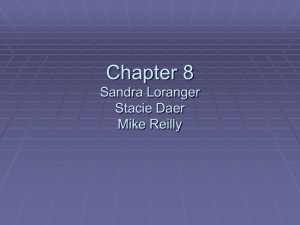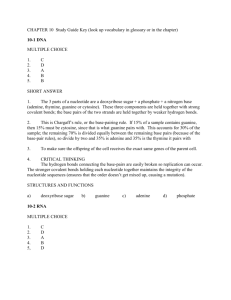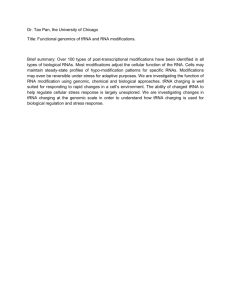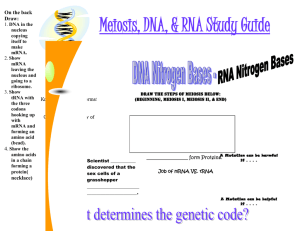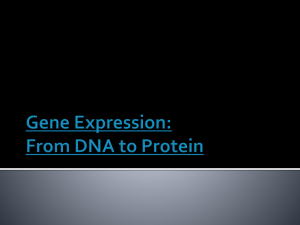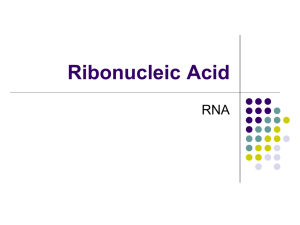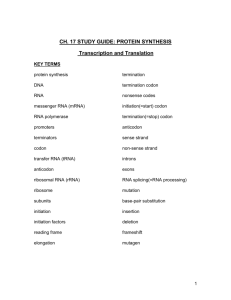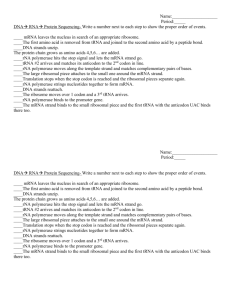RNA (Taken from Biology Mad: Molecular Genetics available at: http
advertisement
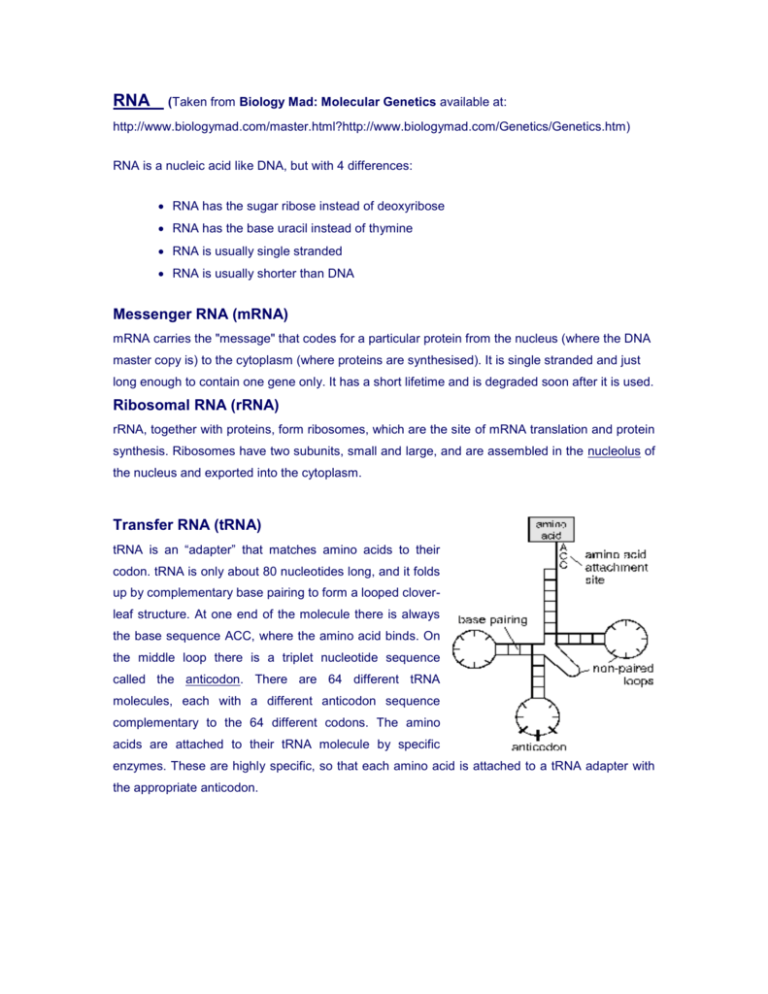
RNA (Taken from Biology Mad: Molecular Genetics available at: http://www.biologymad.com/master.html?http://www.biologymad.com/Genetics/Genetics.htm) RNA is a nucleic acid like DNA, but with 4 differences: RNA has the sugar ribose instead of deoxyribose RNA has the base uracil instead of thymine RNA is usually single stranded RNA is usually shorter than DNA Messenger RNA (mRNA) mRNA carries the "message" that codes for a particular protein from the nucleus (where the DNA master copy is) to the cytoplasm (where proteins are synthesised). It is single stranded and just long enough to contain one gene only. It has a short lifetime and is degraded soon after it is used. Ribosomal RNA (rRNA) rRNA, together with proteins, form ribosomes, which are the site of mRNA translation and protein synthesis. Ribosomes have two subunits, small and large, and are assembled in the nucleolus of the nucleus and exported into the cytoplasm. Transfer RNA (tRNA) tRNA is an “adapter” that matches amino acids to their codon. tRNA is only about 80 nucleotides long, and it folds up by complementary base pairing to form a looped cloverleaf structure. At one end of the molecule there is always the base sequence ACC, where the amino acid binds. On the middle loop there is a triplet nucleotide sequence called the anticodon. There are 64 different tRNA molecules, each with a different anticodon sequence complementary to the 64 different codons. The amino acids are attached to their tRNA molecule by specific enzymes. These are highly specific, so that each amino acid is attached to a tRNA adapter with the appropriate anticodon.
